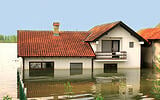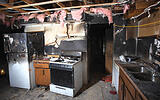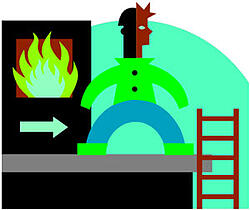

The team of Wolgast Corporation and Wolgast Restoration was created to be a high level provider of full-service restoration services to deal with all of your challenges when mayhem strikes your building. Wolgast Restoration specializes in residential and commercial restoration when it comes to structural damage from water, fire, wind, or other mishaps. And Wolgast Corporation is a commercial contractor who has specialized in buildings of all shapes and sizes since 1948.
So, what are the benefits of having your restoration company on the same team as a general contractor? The communication and actions to start planning the reconstruction portion of your project (if it’s needed) flows fluidly through the company as the experts in charge of your building talk freely and regularly. Also the strength and resources that Wolgast Corporation has developed over the past 70+ years provides a solid foundation for Wolgast Restoration to handle projects of any size.
During the clean-up portion of a project, project technicians can assess the situation and keep the construction staff informed of what’s needed and the construction staff can be estimating budgets, planning for materials, obtaining permits and organizing team coverage. All this is done without much effort on your part, because when you have endured mayhem, the last thing you want is to be burdened with is making phone calls and searching for an unknown company to preserve your building.
Wolgast Restoration is providing its services through the same systemized approach that Wolgast Corporation uses to provide its construction services. We find that having this systemized approach allows us to provide the most uniform and quality service for each unique job. It helps us move quickly to the next task rather than pause to determine what to do next, all to the benefit of our clients through time savings.
We have offices in Saginaw and Kalamazoo areas. If mayhem strikes you, please don’t hesitate to strike back with Wolgast Restoration. Call 855.965.4278 to take immediate action. In the meantime, if you have questions, please visit www.wolgastrestoration.com or call 989-790-9120 when it isn't an emergency.





 The storm has passed. No one was hurt. However, the house wasn’t so lucky. “Now what do we do?”
The storm has passed. No one was hurt. However, the house wasn’t so lucky. “Now what do we do?” 
 Just because the snow is gone doesn’t mean you’re past the danger of a flooded basement. The ground is still frozen and in the process of thawing when the spring rains come, therefore, the ground is too saturated and/or frozen to absorb the water. The water then flows down the easiest path which is usually to your foundation wall and into your basement.
Just because the snow is gone doesn’t mean you’re past the danger of a flooded basement. The ground is still frozen and in the process of thawing when the spring rains come, therefore, the ground is too saturated and/or frozen to absorb the water. The water then flows down the easiest path which is usually to your foundation wall and into your basement.